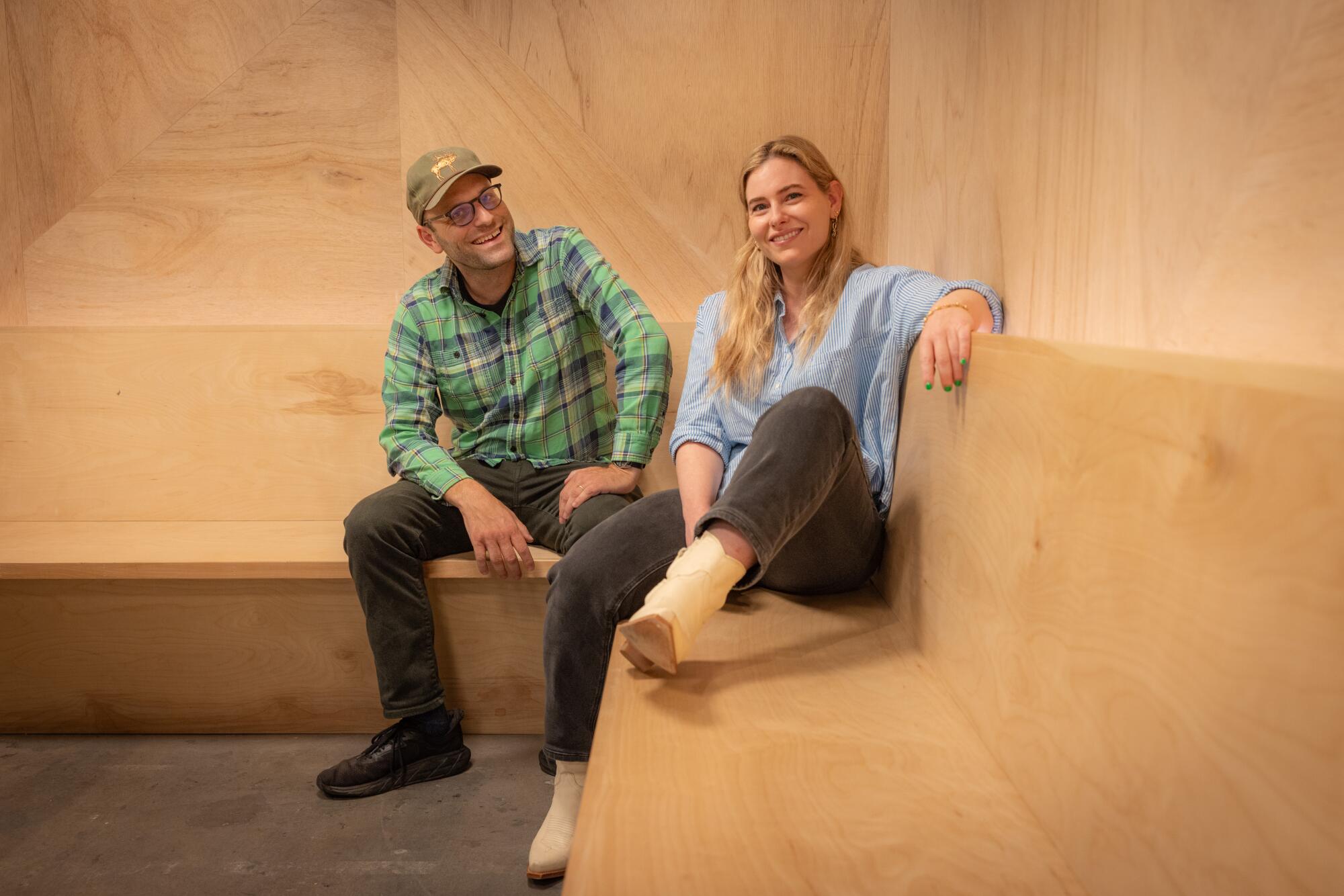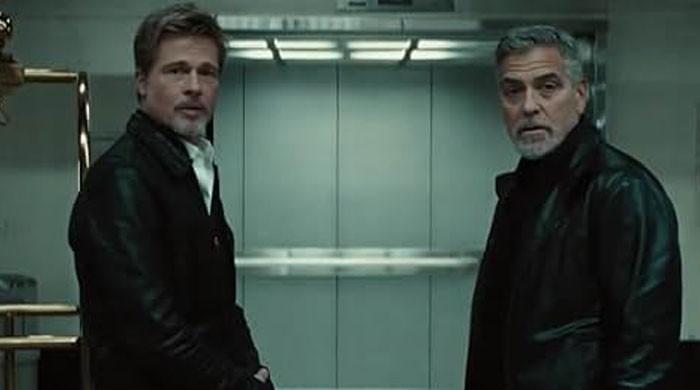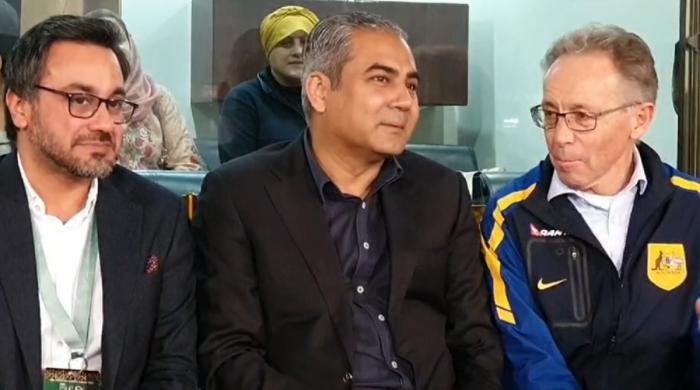The glass partition wall at Lisa Hanawalt's office is bordered by reference sheets dedicated to members of the central family in “Long Story Short”.
Each page lists the name of a character, the month and year, along with its zodiac sign, and an outdated timeline of full -body images that tracks how they look at different ages. Depending on the character, this includes his designs as children, adolescents and adults of medium age.
During a morning of mid -August in Shadowmachine Studio, Hanawalt sits on his desk, drawing different looks from previous incarnations of the characters he made before his final designs were established along with newer works in progress. Raphael Bob-Waksberg feels right behind her while pointing small details that they like and bounce their thoughts from one side to another if certain characters could drastically change their appearance for a year, as people tend to do.
“It's funny that you can't do in many animated programs,” says Bob-Waksberg, the creator and showrunner of “Long Story Short.” “To evolve with our characters and dress them and have so many different looks for them.”
In most animated situation comedies, the characters are trapped in time: perpetually the same age, which generally wear the same clothes, rarely cut their hair, regardless of how many holiday episodes obtain over the years. It is not so in “Long Story Short”, where the passage of time is a characteristic.
“It is very fun to meet the characters and think about their aesthetics,” says Hanawalt, the program supervisor of the program. “We have to draw many different versions of all.”
Shira brothers, left, Yoshi and Avi Schwwooper in “Long Story Short”.
(Netflix)
Throwing Friday in Netflix, “Long Story Short” follows the Schwoopers, a family in the Bay area whose Portmanteau last name is a mixture of Schwartz and Cooper of the parents, through the ups and downs of their lives. The cast of the program includes Lisa Edelstein and Paul Reiser, who express the parents Naomi and Elliot, respectively, and Ben Feldman, Abbi Jacobson and Max Greenfield such as the Schwooper Children, Avi, Shira and Yoshi.
Its history develops over time in everyday events and milestones, with each autonomous episode that jumps between moments that reverberate from anywhere in the 1950s to 2020.
“It feels cumulative, despite the fact that episodes themselves are not necessarily connected directly,” says Bob-Waksberg. “We think a lot about emotional arches rather than narrative arches. Can we feel that these characters have gone on a trip, although we are seeing the [story] out of order? “
“Long Story Short” is Bob-Waksberg's first new show since the conclusion of “Bojack Horseman”, the acclaimed animated adult series that ended in 2020, on a former star comedy star and its struggles set in an alternative Hollywood where humans lived together with anthropomorphic animals. While “Bojack” did not take to show how terrible were the parents the root cause of the problems of several characters, “Long Story Short” is a more nuanced version of dysfunction where it is not so easy to blame.
“As you aged, you realize, we are all screwed in different ways and most of us did not have such bad parents,” says Bob-Waksberg. “We had parents trying and somehow having success, and in other ways, they didn't give us what we needed.”
The program marks the third animated series of the couple. Hanawalt served as a designer and production producer in “Bojack” before developing his own series, “Tuca & Bertie”, in which Bob-Waksberg served as executive producer. But their easy relationship while commenting on a brief sauce clip that explodes and if a character is the type of person who only has a suit, as well as when the conversation deviates into the listed actors, insist on the other tastes after a lost film reference, makes their friendship much deeper.

Life friends Raphael Bob-Waksberg and Lisa Hanawalt have previously worked together at “Bojack Horseman” and “Tuca & Bertie”.
(Jason Armond / Los Angeles Times)
Bob-Waksberg and Hanawalt explain that even during their high school in Palo Alto, where they crossed as theater children and became friends, talked about working together on projects and dreaming about television show ideas. When describing Hanawalt as one of his favorite people and artists, Bob-Waksberg says she is the first person she thinks when she needs someone for artistic work.
After listening to Bob-Waksberg's idea for “Long Story Short”, “I immediately felt that I knew how it should be,” says Hanawalt. “It should be seen as fun Sunday, comics and 'peanuts'. … I thought this should be more hand drawn and loose. [that style] It would help heat it a bit. “
Although Hanawalt says that the funds are not his forte, he had a vision of what he saw for the world and began drawing houses and buildings that looked like those in which they grew up. Bob-Waksberg accredited him as the reason that the show is established in northern California.
Another reason why Hanawalt wanted to work on the program was because he implied the design of humans, something that has been inclined in the past.
“All the other things that send me is for animals [and] People of animals, “she says.” People see me as the animal lady, which I am, I love anthropomorphic animals and plants. But in reality I was tilting towards something more realistic. … I don't want them to get tug. And doing the same over and over again, it's really boring to me. So this was a fun challenge, attracting humans that are as cute as animals. “
Upon hearing this, Bob-Waksberg has fun by how aspects of his past have come to define them.
“I was thinking about how 13, 14 years ago, I was developing a lot of television programs,” he says. “The one who was the animated and now I am a cartoon boy, who does not bother me. It has been very good for me. But it is very funny, [to think that] There is another universe in which this other show was and then would be known as that type of writer. “

The Schwooper family in an episode of “Long Story Short”.
(Netflix)
Both Bob-Waksberg and Hanawalt recognize that it is still a difficult time for the industry, even for writers looking for work and creatives trying to do things. Both mention having presented different ideas that they were sure would be their next projects that finally did not reach anywhere.
“I'm glad to work on this because I am happy not to be a showrunner at this time,” admits Hanawalt. “'Tuca and Bertie' erased me [and] I didn't have enough juice to continue throwing. “
Even so, Bob-Waksberg believes that animation is one of the few places that the shows were based on original ideas have an opportunity, and for that he and Hanawalt are grateful because they prefer to work in their own ideas than to play in the sand box of another person. In other spaces, studies seem to show only interest in ideas based on the existing IP as a book, news or podcast. They also hope that, over time, things will improve.
“The appetite for the original and good and animated programs is always there,” says Hanawalt. “That is consistent. The audience is there. It's just a matter of taking them.”
Although the program focuses a Jewish family in northern California and includes winks to its education, Bob-Waksberg has been clear that “Long Story Short” is not autobiographical. But it is deeply personal. He explains that discussing the novel “Interior Chinatown”, which confronts the interaction of representation and identity, with the author Charles Yu was one of the things that made him think about what would be to address his own identity in his work.
“It seemed that he opened this new door of history that he had not considered before,” says Bob-Waksberg. “One of the interesting things to work on this program is to unpack [how]Especially in a conversation with my other writers and the actors and other people, some things that I attributed to being Jewish are only my family. “

“Long Story Short” Showrunner Raphael Bob-Waksberg and Producer Supervisor Lisa Hanawalt.
(Jason Armond / Los Angeles Times)
While the series addresses the “trauma”, in appointments depending on the character they request, rooted in the education of people, it is also full of humor and heart. Most episodes approach any more personal problem facing Schwoopers, and the passage of time is transmitted through the ages and appearances of the characters instead of referring to specific events and headlines that could be associated with the era of that story.
But a global event that the series recognizes is the Covid-19 Pandemia. For Bob-Waksberg, it was important to do so because it is a collective trauma that affected everyone and should be remembered as such.
“This was a true division point for our world and for all of us as individuals,” says Bob-Waksberg. “I feel that he has been underrepresented in pop culture in a strange way [and] We were all very fast to move on. ”
“Let's not pretend it never happened,” he continued. “I feel that, as a narrator, it is somehow my work to be a document of the world.”
Remembering how important it was for him to listen to stories of the Holocaust survivors about his experiences when he was younger, Bob-Waksberg adds: “I don't want to forget these things.”












